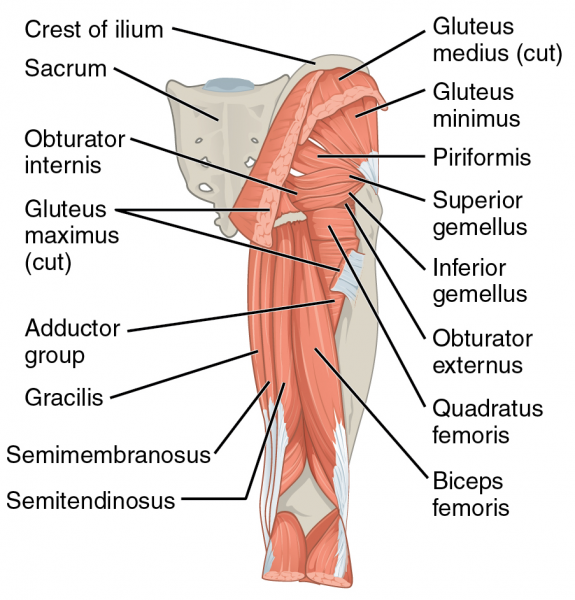The gluteal muscle group includes 9 muscles divided into superficial and deep muscle groups. They allow the abduction, extension and lateral rotation of the thigh.

Superficial muscles
The superficial gluteal muscles are much larger than the deep ones, and they include:
- Gluteus maximus
- Gluteus medius
- Gluteus minimus
- Tensor fasciae latae
Gluteus Maximus muscle
The gluteus muscle is the largest muscle in the human body, forming the most superficial of the gluteal muscles, giving the typical prominence to the nates.
- It has a broad area of origination starting from the roughened area of the ilium, dorsal surface of the sacrum, the lateral surface of the coccyx and sacrotuberous ligament of the pelvis. It runs inferolaterally, exiting the pelvis and inserting onto the iliotibial tract laterally, and the gluteal tuberosity of the femur medially.
- The gluteus maximus muscle functions are the extension of the thigh and its lateral rotation, aiding in rising from sitting position, and stabilization of the hip and knee joints during lateral movement of the thigh.
